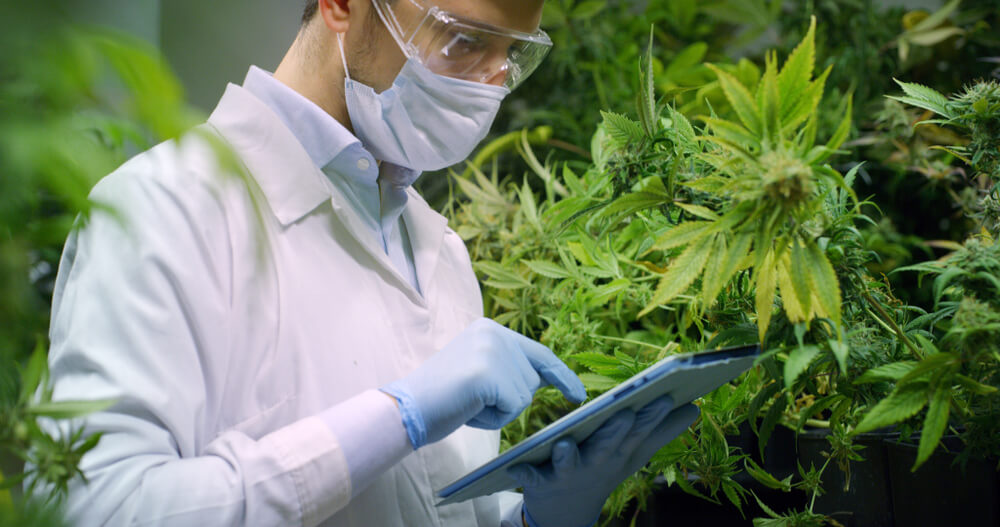by Angel Fernandez, MyFloraDNA
When it comes to growing healthy plants, it’s easy to focus on avoiding pests, diseases, and other harmful intruders that can wreak havoc on our crops. However, not all microorganisms are bad for our cultures. In fact, some microorganisms can actually benefit our plants in a big way, providing protection, enhancing nutrient uptake, and even increasing resistance to stress and adverse conditions. These microorganisms are called biostimulants, and the relationships they form with plants are known as mutualism.
But, what is mutualism?
All plants host communities of microorganisms that cause no harm to them, in fact, they benefit them. This relationship between one organism and another, where both seem to benefit from their coexistence, is called mutualism. Cannabis plants are no exception; they also create mutualistic relationships with other organisms. In this case, mutualism occurs between microorganisms like bacteria or fungi (or both) and cannabis plants, who lend their tissues to these organisms to inhabit and receive food. In return, microorganisms provide the plant with different benefits like phytohormone supplies, secondary metabolites, and enzyme production stimulation. They also help in the solubilization of minerals and the absorption of nutrients.
One of the most interesting things about mutualistic relationships in cannabis is that they occur all over the plant, but different microorganisms tend to prefer different parts of the plant. Endophyte organisms that live inside the plant can be found in the roots, stems, petioles, seeds, and buds of cannabis plants. Most plants host both bacteria and fungi, but studies show that stems host fungi exclusively. The bacteria and fungi that inhabit the roots are the most popular and are known as mycorrhizas and rhizobacteria. These are organic compounds that promote growth in plants and are mostly used as biostimulants in many cultures.
One of the most significant benefits of mutualism between microorganisms and cannabis is the production of secondary metabolites like CBD and THC. Four specific bacteria taxa, including Comamonas testosteroni, Citrobacter freundii, Enterobacter cloacae, and Pseudomonas putida, have been shown to enhance cannabis plant growth and secondary metabolite production. Evidence suggests that a combination of these four species of bacteria acts as a biostimulant.
Pseudomonas bacterial strains, in particular, benefit cannabis plants by producing diffusible antibiotics that act as pathogen biocontrollers. Bacillus strains also act as a defense barrier against pathogens by preventing them from generating resistance to secondary compounds that plants produce to eliminate them
In addition to bacteria, fungi that live in the roots, called mycorrhizae, help improve water and nutrient absorption in plants and stimulate crop growth by providing bioactive substances. Endophytic cannabis fungi of the genera Paecilomyces, Penicillium, Pantoea, and Trichothecium produce bioactive substances that act as fungicides, especially against the fungus Fusarium oxysporum. These substances not only promise to be a solution to serious problems in cannabis plants as biological control agents against aggressive pathogens but also a sustainable resource and a substitute for chemopesticides on the market. Using them reduces traces of pesticides in cannabis flowers and allows growers to adapt to government regulatory policies that have zero tolerance against pesticides.
So how can we encourage these mutualistic relationships to occur in our plants?
The mutualistic relationships between microorganisms and plants occur naturally without any type of artificial additive, depending on the environmental conditions, the cultivation area, the pH and salinity of the soil, and other characteristics. Some may exist naturally in the substrate or be accidentally transmitted in many ways.
However, cannabis growers can use various methods to introduce these microorganisms into their crops, either on the substrate or directly on the plant. Commercially, some companies sell products with inoculums that contain some strains of fungi and bacteria that encourage plant growth and help protect them from pathogens.
Other ways to acquire these strains are through organic matter such as compost, which is rich in sugars bacteria. Also, older compost that has grown moldy over time can contain beneficial fungal strains for cannabis plants.
In conclusion, mutualism is a beneficial relationship between microorganisms and cannabis plants that can improve crop growth, protect plants from pathogens, and reduce the need for pesticides. By understanding these relationships and encouraging them, growers can promote healthier cannabis plants and contribute to a more sustainable and eco-friendly cultivation process.
 About MyFloraDNA: We are a genomic laboratory based in Woodland California, delivering modern genomics for the Cannabis Industry. \
About MyFloraDNA: We are a genomic laboratory based in Woodland California, delivering modern genomics for the Cannabis Industry. \
Our services include Trait detection (cannabinoid profile and sex/gender ID), Pathogen Detection, and Genetic Validation Services. We offer breakthrough solutions using the inner power of your plants.


Follow NCIA
Newsletter
Facebook
Twitter
LinkedIn
Instagram
–